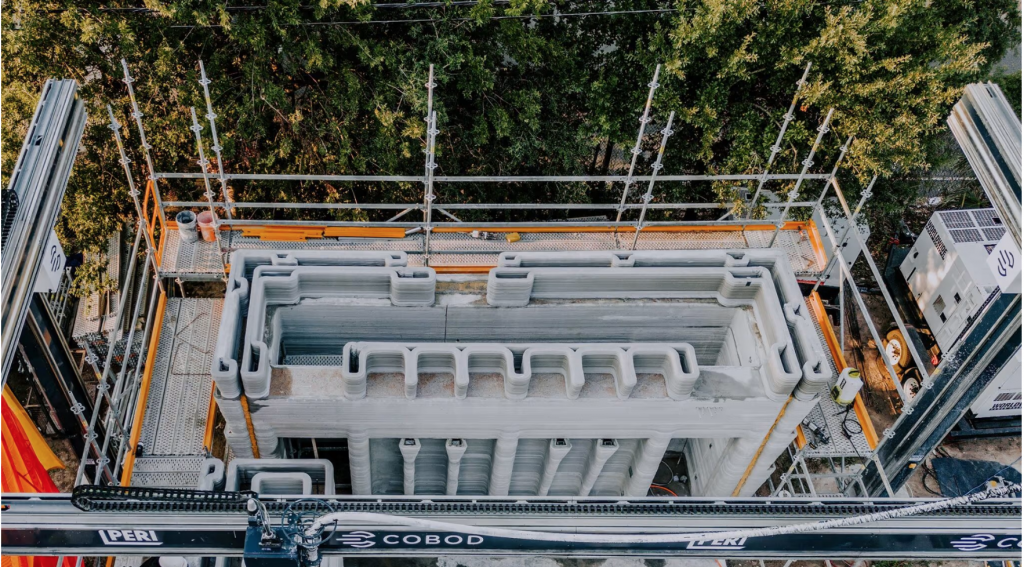
From models to life-size buildings, 3D printers are one of many high-tech tools aiding the construction industry. This image is of the largest printed U.S. building, a 4,000-square-foot house in Houston. (Source: COBOD printing construction company, using the PERI 3D printer)
Experts Say Building in the Future Will Cost Less with ConTech AI Design
If you think of the tools for creating basic construction sites, AR and AI probably wouldn’t come to mind first. But according to an article on fastcompany.com, the construction industry is fully on board with modern AI and the benefits of employing AR in what it calls “ConTech.”
After a few years of labor shortages and price increases for materials, construction job managers are looking to save money with high tech—especially when it comes to fixing mistakes in the process of building.
“Inaccurate building, leading to errors and rework (redoing work due to errors), is a project killer and contributor to these issues. Rework accounts for more than 30% of all work onsite and costs between 2.4% and 12.4% of a project’s contract value. Technology can lend a hand here.”
In 2022, ConTech investment reached $5.38 billion, with over four-fifths of it in North America and Europe, according to investment specialists Cemex Ventures. Companies use such tech as 3-D printers to construct models, as well as life-sized buildings, as well as augmented reality and Computer Vision. Crews no longer rely on instinct and paper designs, but instead use Building Information Modeling (BIM). More than three-quarters of civil engineers rely on it
Field engineers can compare holograms of 3D design models to real-world structures using Augmented Reality (AR), or monitor a building in real-time using sensors to compare it against a digital twin and proactively identify errors. Construction is finally going digital, taking human error out of the picture once and for all—a critical step in eliminating error.
Nearly every profession or business category in the world is adopting AI as part of their business plan. Digital information can be made easily transferable between different trades and this means saving time and money, while avoiding confusion on most projects.
The author of this article, David Mitchell, summed up the need for understanding how important AI will be to building our future:
“Faced with tight project deadlines and often unpredictable market challenges such as supply chain shortages, it will take some time for the traditionally slow-moving industry to adjust to this new futuristic normal. Confidence is needed to invest in and adopt the latest technology on the market, but it’s already happening and is accelerating. It’s catch on quickly, or be left in the dust.”
read more at fastcompany.com







Leave A Comment